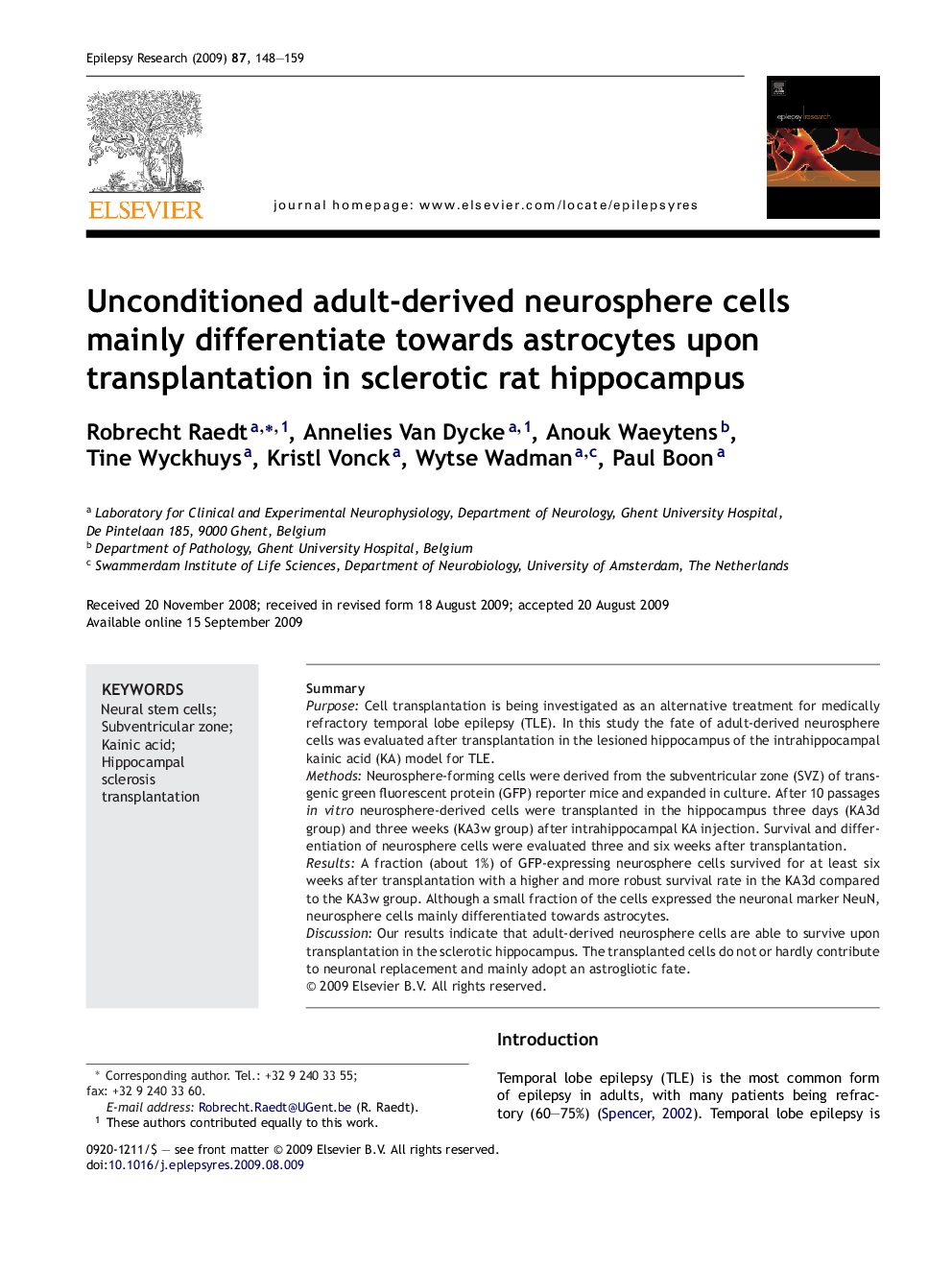| Article ID | Journal | Published Year | Pages | File Type |
|---|---|---|---|---|
| 6016282 | Epilepsy Research | 2009 | 12 Pages |
SummaryPurposeCell transplantation is being investigated as an alternative treatment for medically refractory temporal lobe epilepsy (TLE). In this study the fate of adult-derived neurosphere cells was evaluated after transplantation in the lesioned hippocampus of the intrahippocampal kainic acid (KA) model for TLE.MethodsNeurosphere-forming cells were derived from the subventricular zone (SVZ) of transgenic green fluorescent protein (GFP) reporter mice and expanded in culture. After 10 passages in vitro neurosphere-derived cells were transplanted in the hippocampus three days (KA3d group) and three weeks (KA3w group) after intrahippocampal KA injection. Survival and differentiation of neurosphere cells were evaluated three and six weeks after transplantation.ResultsA fraction (about 1%) of GFP-expressing neurosphere cells survived for at least six weeks after transplantation with a higher and more robust survival rate in the KA3d compared to the KA3w group. Although a small fraction of the cells expressed the neuronal marker NeuN, neurosphere cells mainly differentiated towards astrocytes.DiscussionOur results indicate that adult-derived neurosphere cells are able to survive upon transplantation in the sclerotic hippocampus. The transplanted cells do not or hardly contribute to neuronal replacement and mainly adopt an astrogliotic fate.
